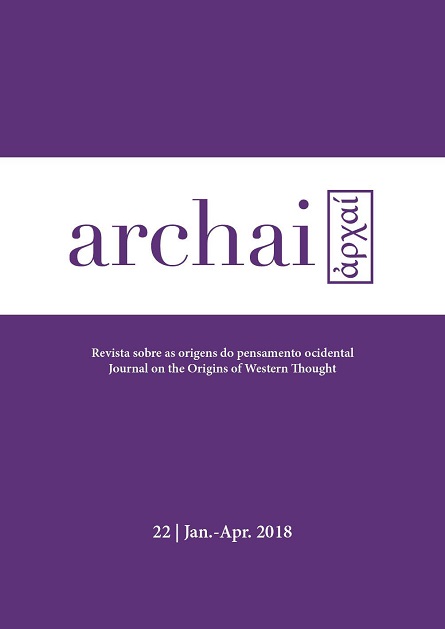"Hubiese querido morir antes o nacer después" (Hesíodo, Op. 175)
DOI:
https://doi.org/10.14195/1984-249X_22_2Keywords:
Hesíodo, mito de razas, justicia, Erga, esperanzaAbstract
Según su esquema de las cinco Edades o Razas de la humanidad, Hesíodo dice vivir en la Edadde Hierro, y se lamenta: "Hubiese querido morir antes o nacer después". Una interpretación superficial del mito podría sostener que, dado el carácter cíclico del tiempo, la historia volverá a repetirse y en el futuro habrá una nueva Edad de Oro, en la cual Hesíodo hubiese preferido nacer. Nada más erróneo: la Tierraya no es la madre universal, ya se inventó la mujer, los seres humanos nacen ya por unión sexual, ya existe la obligación de trabajar. Un regreso al pasado es imposible, ergo, impensable. Para explicar ese extraño deseo de "nacer después" proponemos la siguiente hipótesis de trabajo: las cuatro Edades precedentes (las tres tradicionales, Oro, Plata, Bronce, más la cuarta, la de los Héroes, agregada por Hesíodo para justificar el pasado histórico) son paradigmas a seguir. Con estos cuatro paradigmas a la vista, Hesíodo encara su tiempo, la conflictiva Edad de Hierro. Según el modelo que se siga, el futuro será negativo o placentero. Todo depende de los valores que se adopten, la justicia o la injusticia, el respeto de los dioses o su desconocimiento. Todo es posible, porquela Esperanza quedó encerrada en la tinaja de Pandora.
Downloads
Downloads
Published
How to Cite
Issue
Section
License
Given the public access policy of the journal, the use of the published texts is free, with the obligation of recognizing the original authorship and the first publication in this journal. The authors of the published contributions are entirely and exclusively responsible for their contents.
1. The authors authorize the publication of the article in this journal.
2. The authors guarantee that the contribution is original, and take full responsibility for its content in case of impugnation by third parties.
3. The authors guarantee that the contribution is not under evaluation in another journal.
4. The authors keep the copyright and convey to the journal the right of first publication, the work being licensed under a Creative Commons Attribution License-BY.
5. The authors are allowed and stimulated to publicize and distribute their work on-line after the publication in the journal.
6. The authors of the approved works authorize the journal to distribute their content, after publication, for reproduction in content indexes, virtual libraries and similars.
7. The editors reserve the right to make adjustments to the text and to adequate the article to the editorial rules of the journal.



